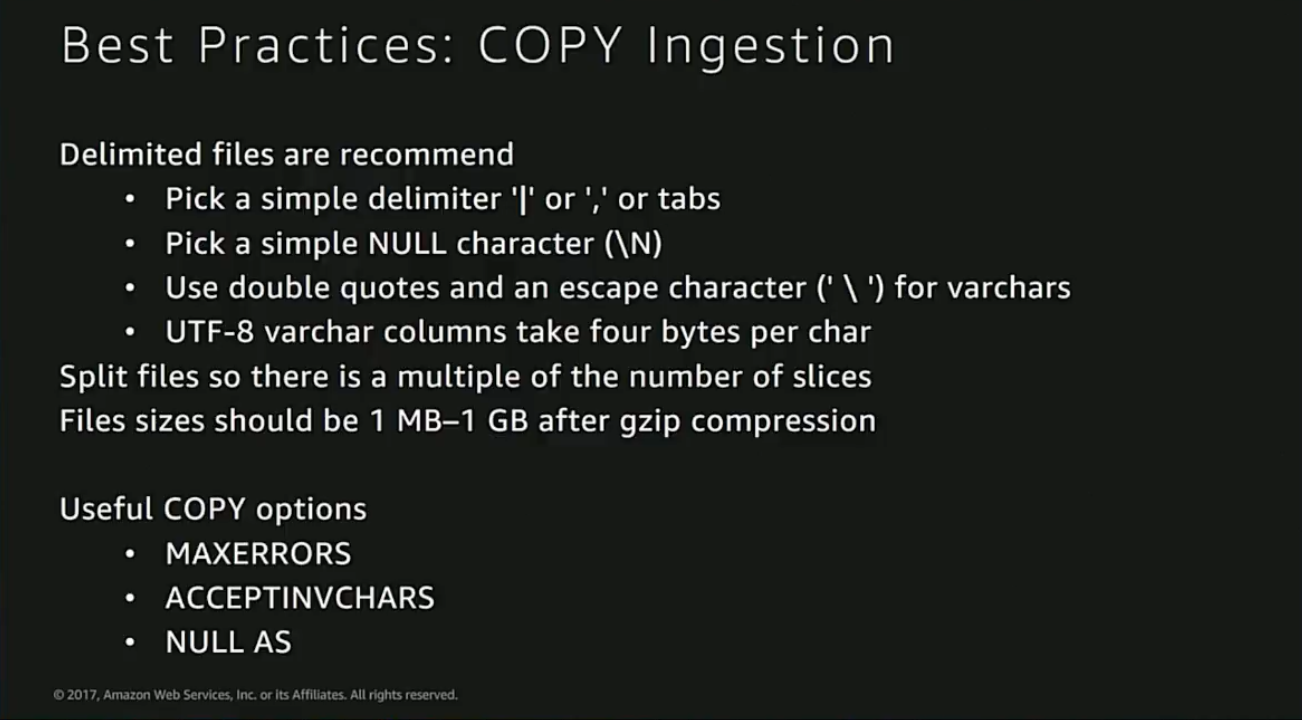

How you manage these keys is important, because you need to be able to generate, store, rotate, and control access to them. Encryption requires keys to allow you to perform the encrypt and decrypt operations on your data. If you want to follow my example exactly, you can download my data file.īefore we start using the AWS Key Management Service, let’s quickly discuss what it is.The Amazon Redshift documentation has details on preparing a data file for ingest with COPY.A data file for loading into Amazon Redshift.The AWS Command Line Interface (AWS CLI) installed and configured.Note that in a production system you would be more granular and restrictive in controlling access to master keys. An AWS Identity and Access Management (IAM) user assigned with a role which has “PowerUserAccess” policy attached.

You’ll need the following AWS pieces in place:
REDSHIFT UNLOAD WITH GZIP HOW TO
In this post, I will walk through a solution that meets these requirements by showing you how to easily encrypt your data loads into Amazon Redshift from end to end, using the server-side encryption features of Amazon S3 coupled with the AWS Key Management Service (AWS KMS). Have you been looking for a straightforward way to encrypt your Amazon Redshift data loads? Have you wondered how to safely manage the keys and where to perform the encryption? Russell Nash is a Solutions Architect with AWS


 0 kommentar(er)
0 kommentar(er)
